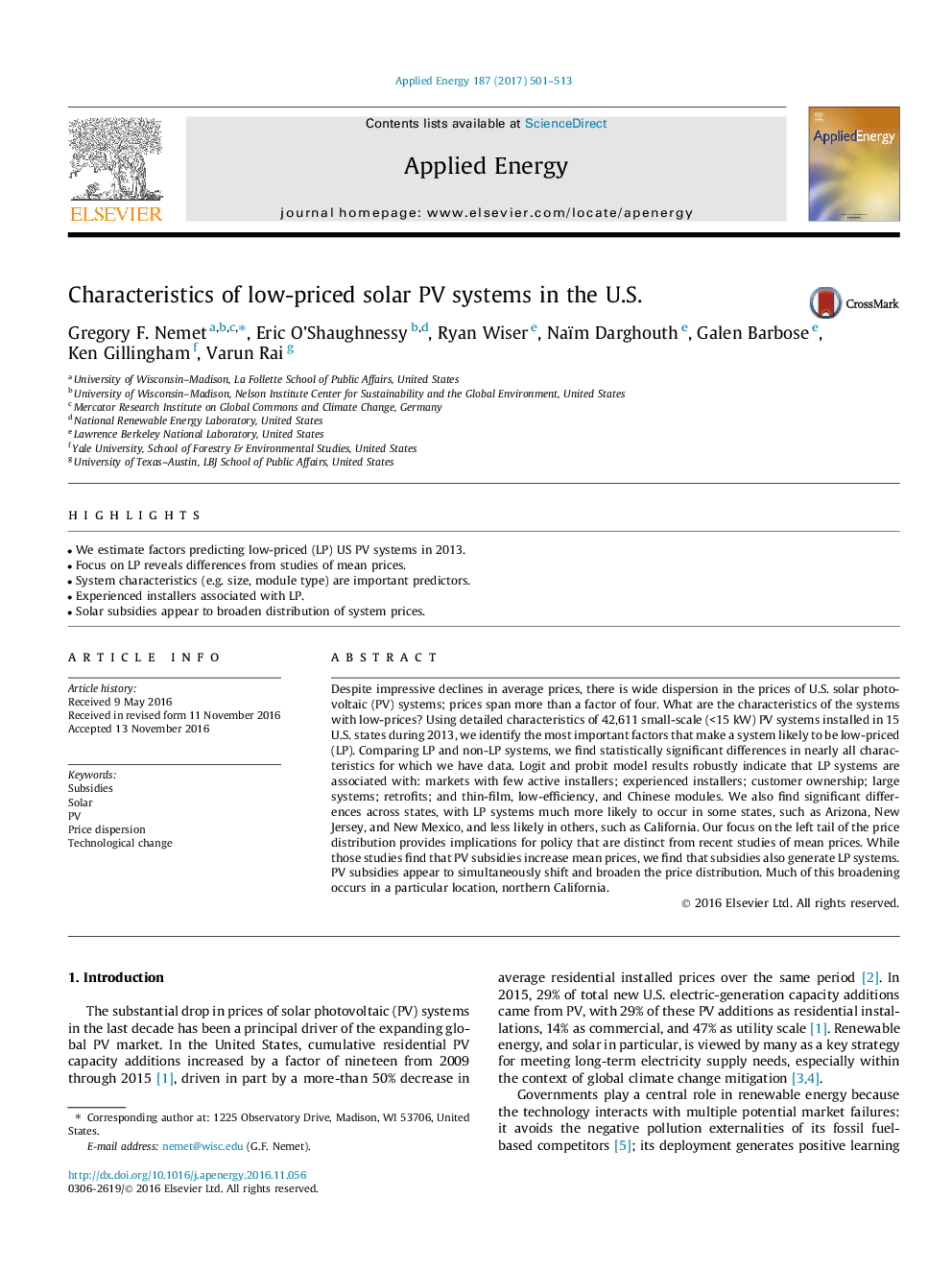| Article ID | Journal | Published Year | Pages | File Type |
|---|---|---|---|---|
| 4916695 | Applied Energy | 2017 | 13 Pages |
Abstract
Despite impressive declines in average prices, there is wide dispersion in the prices of U.S. solar photovoltaic (PV) systems; prices span more than a factor of four. What are the characteristics of the systems with low-prices? Using detailed characteristics of 42,611 small-scale (<15Â kW) PV systems installed in 15 U.S. states during 2013, we identify the most important factors that make a system likely to be low-priced (LP). Comparing LP and non-LP systems, we find statistically significant differences in nearly all characteristics for which we have data. Logit and probit model results robustly indicate that LP systems are associated with: markets with few active installers; experienced installers; customer ownership; large systems; retrofits; and thin-film, low-efficiency, and Chinese modules. We also find significant differences across states, with LP systems much more likely to occur in some states, such as Arizona, New Jersey, and New Mexico, and less likely in others, such as California. Our focus on the left tail of the price distribution provides implications for policy that are distinct from recent studies of mean prices. While those studies find that PV subsidies increase mean prices, we find that subsidies also generate LP systems. PV subsidies appear to simultaneously shift and broaden the price distribution. Much of this broadening occurs in a particular location, northern California.
Related Topics
Physical Sciences and Engineering
Energy
Energy Engineering and Power Technology
Authors
Gregory F. Nemet, Eric O'Shaughnessy, Ryan Wiser, Naïm Darghouth, Galen Barbose, Ken Gillingham, Varun Rai,
